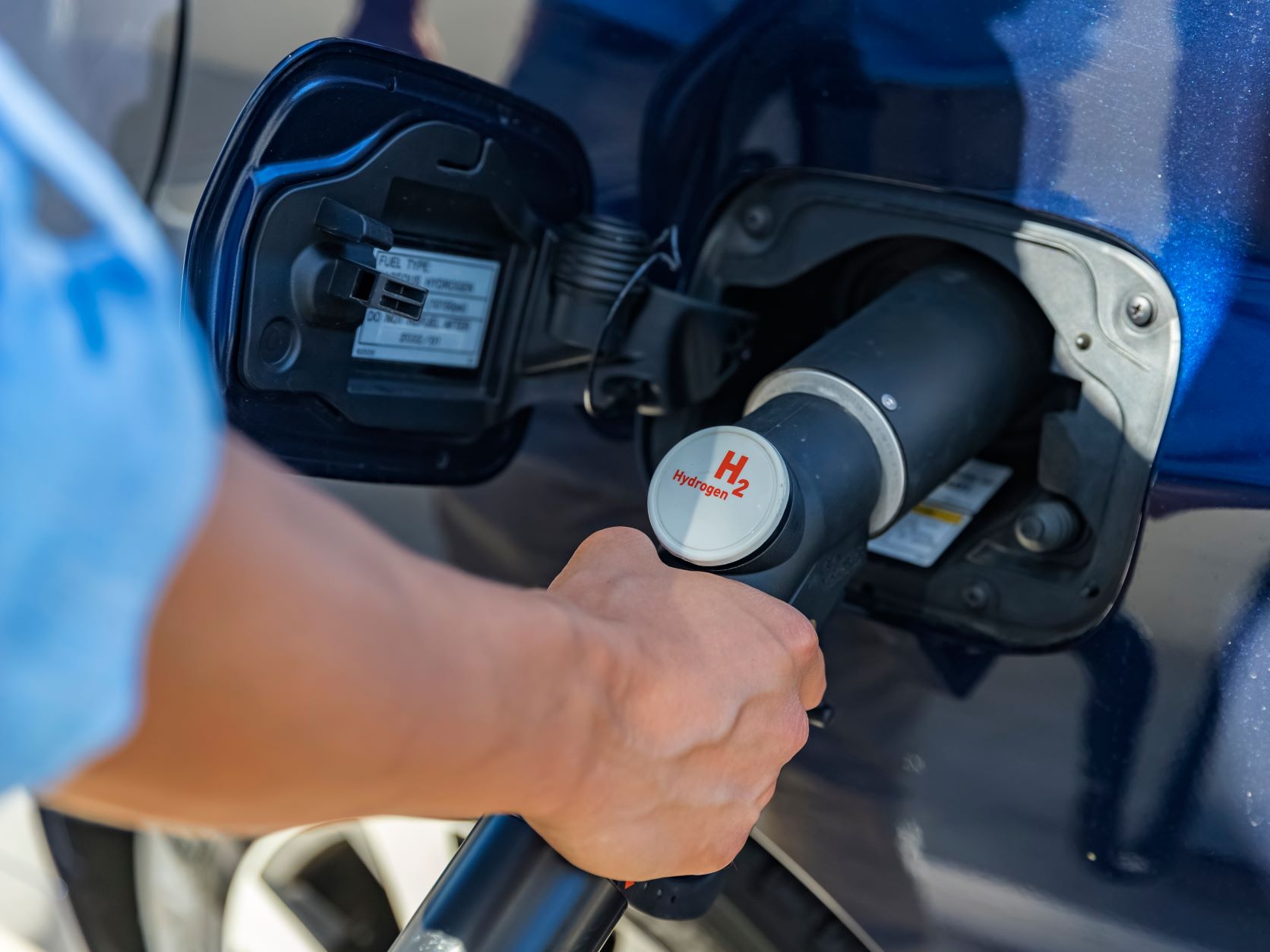
Following Boris Johnson’s 2020 announcement that the UK will cease to sell new petrol and diesel cars from 2035, the UK Government has since revealed within their Transport Decarbonisation Plan, that they have also begun consultations on ending the sale of all non-zero emission HGVs from 2040, with lighter HGVs to end by 2035. But in order for vehicle operators to refresh their fleets and given that hydrogen is quickly becoming the most suitable low-emission fuel for decarbonising heavy-duty vehicles, there first needs to be a ramp up in the provision of hydrogen refuelling to provide a sufficient and reliable infrastructure.
Hydrogen refuelling stations (HRS) have quickly adapted the common concept of petrol and diesel stations to present a hydrogen refuelling point that vehicle users are custom to. Designed to fill hydrogen powered vehicles with high-pressure hydrogen at 350barg and 700 barg, a typical HRS consists of hydrogen storage tanks, gas compressors, a pre-cooling system and a hydrogen dispenser. Some hydrogen refuelling stations also possess their own gas production facility, generating hydrogen directly on-site and eliminating the need for fuel deliveries.
There are, however, only around 11 hydrogen refuelling stations in the UK at present, this limiting vehicle operators the access to hydrogen fuel across the nation. Europe appears to be making better strides in implementing fixed HRS’, with over 200 located across the likes of Germany, France and the Netherlands. Yet, whilst this is promising, a typical fixed refuelling facility normally takes from 18 to 24 months to prepare and construct and can cost up to £1 to £2 million to develop. Thus, hindering the fast uptake and deployment of hydrogen-fuelled, zero-emission vehicles, with vehicle fleet owners struggling to finance the high capital expenditure required, and fast!

Should owners surmount these initial barriers, other factors such as complex permitting processes and procedures are further time consuming and demanding. Specific safety procedures, codes and standards are required to be met. Once the refuelling station is fully functional, operational efficiency can also be a cause for concern, with the potential for limits on the number of vehicles served, delays between vehicle fills as buffer tanks recharge, and in residential areas potential compressor noise concerns.
As the demand for hydrogen grows, it’s become apparent that suppliers are struggling to keep pace. Currently mainly located around London and the Southeast, there are very few fixed hydrogen filling stations in Scotland and none in Northern Ireland and Wales. This therefore raises the question of how vehicle owners are expected to successfully introduce hydrogen powered vehicle fleets, such as hydrogen buses and hydrogen heavy-duty trucks, with the lack of an appropriate infrastructure in place.
As hydrogen leaders within the industry such as BOC, ITM Power and Element 2 push forward with plans to construct more hydrogen refuelling stations across the UK, they can’t come quick enough. The key to facilitating and accelerating the demand for hydrogen during the development of fixed HRS’, therefore, falls to alternative innovative hydrogen refuelling solutions that can meet the needs of vehicle operators quickly and at a low cost.
Hence NanoSUN’s introduction of the mobile Pioneer Hydrogen Refuelling Station (HRS). Designed to provide an economic solution compared to an expensive fixed HRS, the Pioneer has a low capital expenditure. Presenting an appropriate economic hydrogen refuelling solution until a vehicle fleet reaches such scale that a fixed hydrogen filling station is needed and can be justified. Better yet, the Pioneer’s technology removes the need for a compressor on board, eliminating the requirement for a high power electricity connection, allowing for rapid deployment at almost any location. Its incorporation of NanoSUN’s cascade technology provides vehicle fleets with fast back-to-back vehicle filling and high reliability.

Overall, in comparison to a fixed HRS, the Pioneer requires low maintenance, low CapEX and can be easily implemented with its ability to be transported to any location for direct refuelling at the point of use. This serving a much-needed refuelling solution until a sufficient hydrogen infrastructure has been established within the UK and across Europe.
As critics of hydrogen as a fuel source continue to point at the expense of hydrogen production and its insufficient supply chain, companies such as NanoSUN are proving that these barriers can be overcome and that innovative, economic solutions like the Pioneer are making hydrogen fuel easily and economically accessible for introductory fleets and demonstrations; paving the way for hydrogen to become a leading energy vector within the transportation industry.
Whilst the UK’s mission to build a hydrogen infrastructure proves to be slow and expensive, it is inevitable that with continued support and implementation, the nation will prove to be as successful as Europe in building an effective network and will one day meet the demand for nation-wide hydrogen refuelling.
Find out how the Pioneer compares to a typical fixed hydrogen refuelling station or contact us at info@nanosun.co.uk for more information.